Gallery opened 7 Apr 2022
Updated: 27 May 2022
Last of Page 8 of manual added
Audio on cellophane


Audio on cellophane


The Fonda Cellophane Recorder |
Gallery opened 7 Apr 2022 |
The Fonda Cellophane Recorder used a cutter that put 60 grooves per inch into a cellophane tape, each groove representing 8 minutes of recording. It was claimed to record for as long as 8 hours without any attention, so track-switching must have been automatic. The recordings were permanent and could be played back many times. A 350-foot length of cellophane tape was possibly held in a circular cassette; it was claimed no tape threading was required, but the instruction manual suggests otherwise. The frequency response was claimed as +/- 2 dB, 50 - 8000 Hz.
Cellophane is normally used as a very thin film for wrapping. The tape used here must have been reasonably thick if a groove could be cut into it.
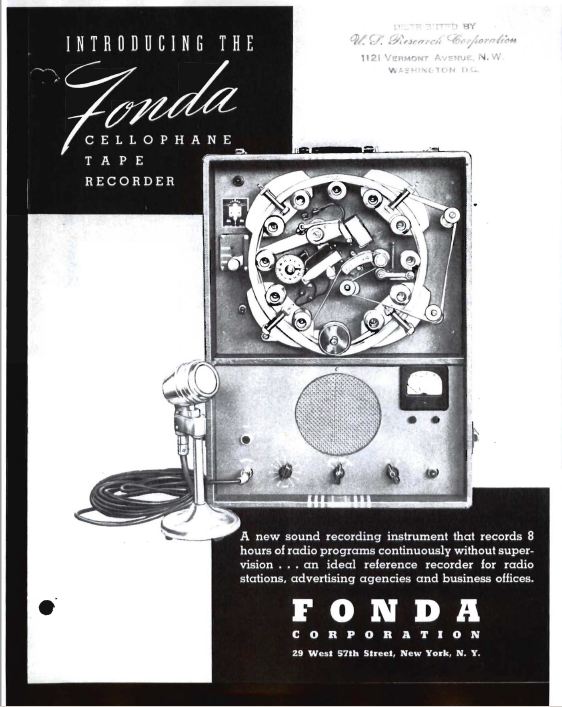 | Left: Instruction manual for the Fonda recorder: 1939
|
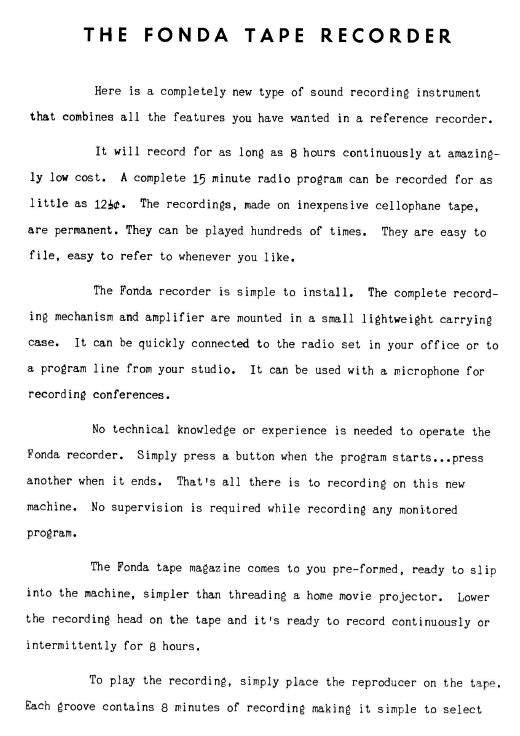 | Left: Instruction manual for the Fonda recorder: 1939
|
 | Left: Instruction manual for the Fonda recorder: 1939
|
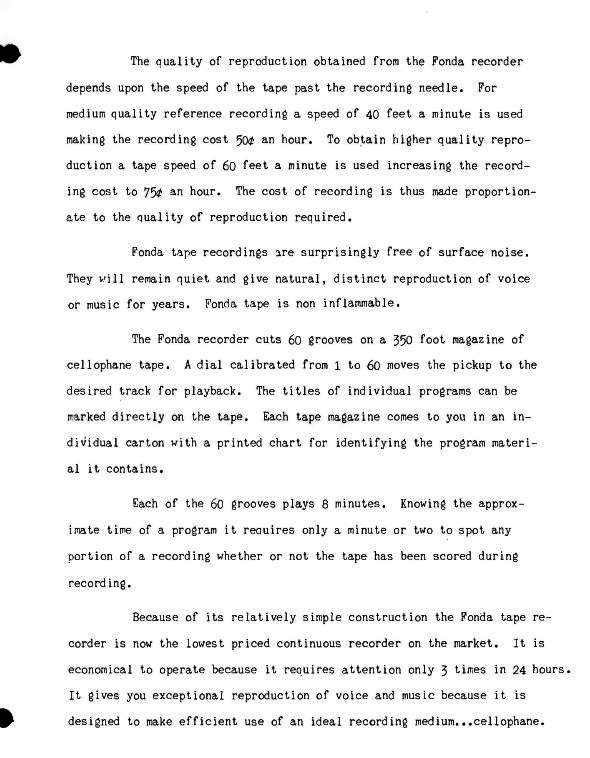 | Left: Fonda recorders: 1945
|
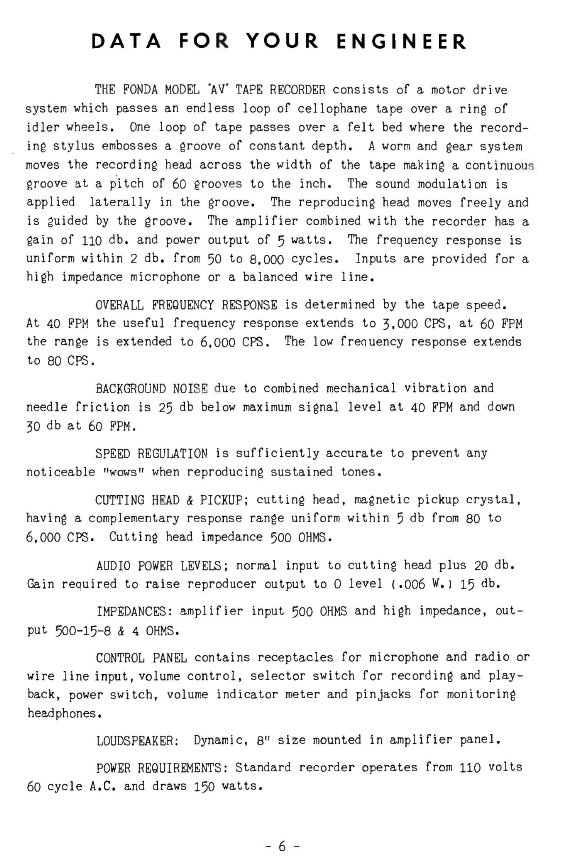 | Left: Technical spec for Fonda recorders: 1945
|
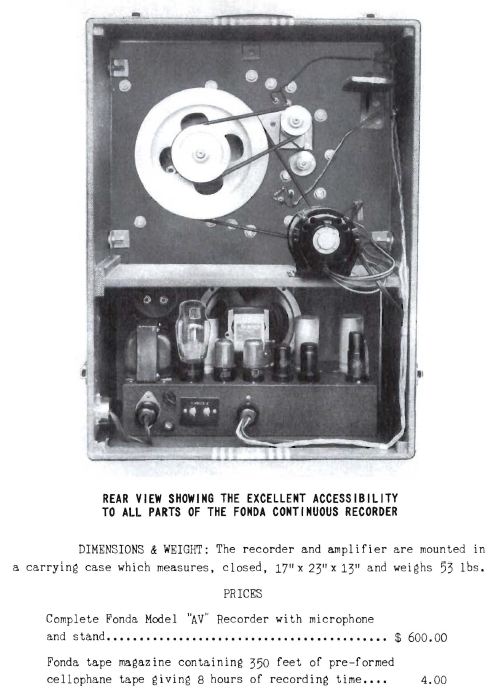 | Left: Instruction manual for the Fonda recorder: 1939
|
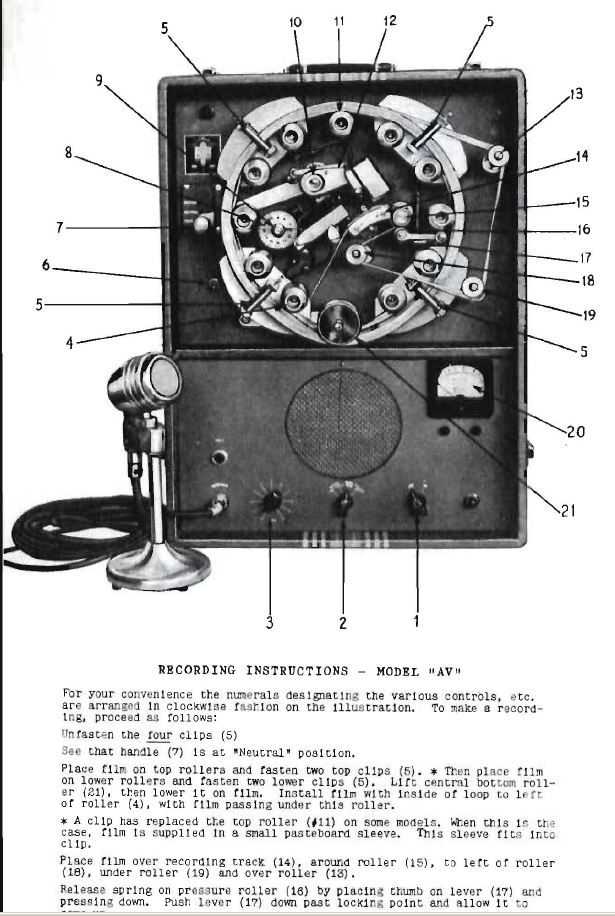 | Left: Instruction manual for the Fonda recorder: 1939
|
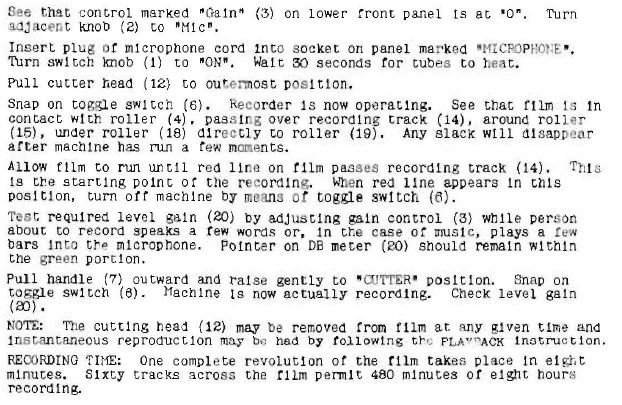 | Left: Instruction manual for the Fonda recorder: 1939
|
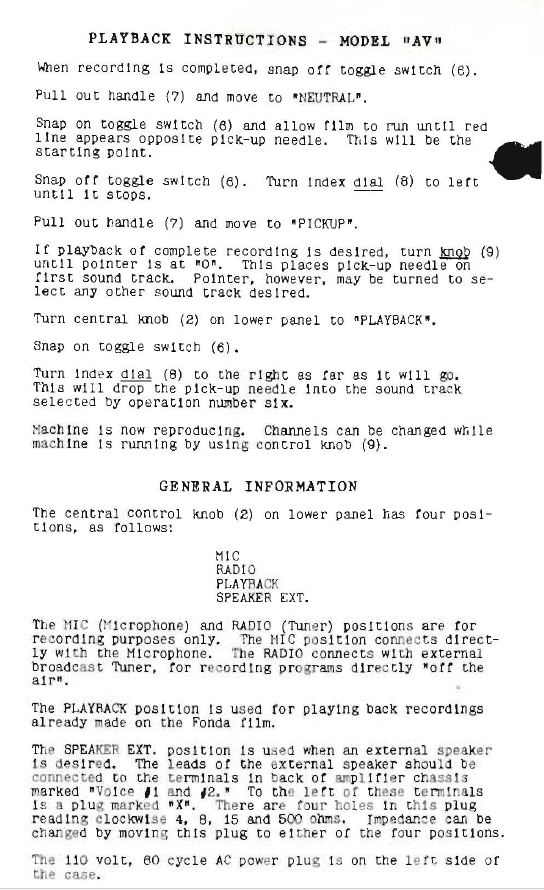 | Left: Instruction manual for the Fonda recorder: 1939
|
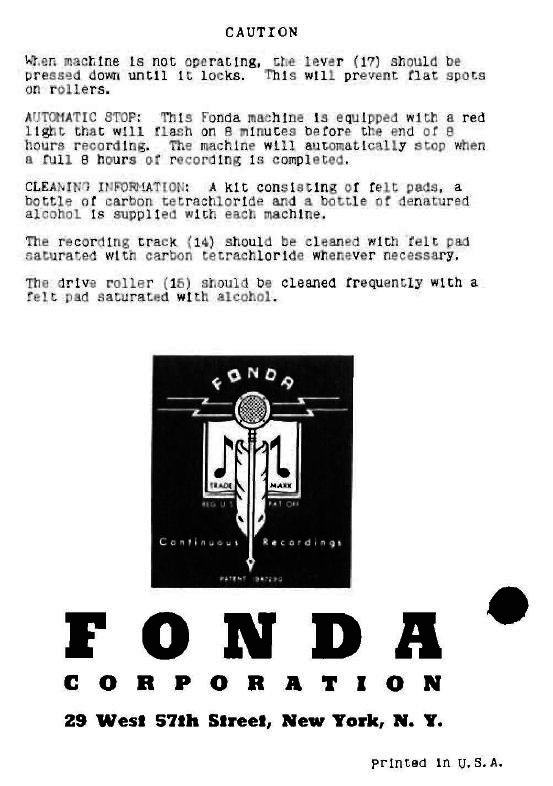 | Left: Instruction manual for the Fonda recorder: 1939
|
 | Left: Advert for Fonda recorders: 1945
|
The Fonda system is mentioned in the Museum Of Magnetic Sound Recording; you need to scroll to about halfway down the page.

  
|